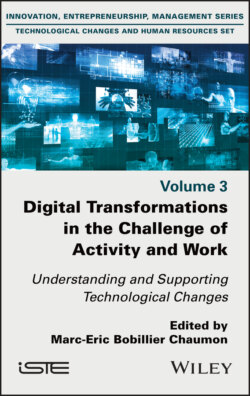Читать книгу Digital Transformations in the Challenge of Activity and Work - Группа авторов - Страница 41
3.2.4. A technical definition of virtual reality
ОглавлениеWe will end with a technical definition of virtual reality. It is: “a scientific and technical field exploiting computing (1) and behavioral interfaces (2) in order to simulate in a virtual world, the behavior of 3D entities, which interact in real time with each other and with one or more users, in pseudo-natural immersion (3) via sensor-motor channels” (Fuchs et al. 2006, p. 8).
Let us complete some aspects of this definition:
1 1) The term “computing” refers to all hardware and software parts of the system.
2 2) Behavioral interfaces are of three types:– sensory interfaces, which provide information to the user about changes in the virtual environment. For example, a change in color may inform a user simulating an assembly operation, that the tool he/she is using has collided with another object;– motor interfaces, which inform the system of the user’s motor actions. For example, the system can exploit data on the user’s position in an immersive room;– sensory-motor interfaces, which provide information to both the computer system and the user. For example, a force feedback arm informs the system about the user’s gesture, and at the same time forces the user to make efforts to simulate the resistance of the part being pierced.
3 3) Finally, we speak of “pseudo-natural” immersion, because the user does not act the same way in the virtual environment as he/she would naturally act in the physical world. There are sensor-motor biases in the interaction with virtual reality: for example, instead of walking from one point to another in the virtual environment, the user can teleport. Furthermore, the virtual environment does not necessarily provide all the sensory stimuli of the physical world.
It is also important to note that the definition of virtual reality is based on two conditions: the user must be immersed in a virtual environment, and he/she must also interact within this environment in real time. Therefore, 360° videos or 3D cinema are excluded from this definition, since the user is immersed in a world without really being able to interact with it.
